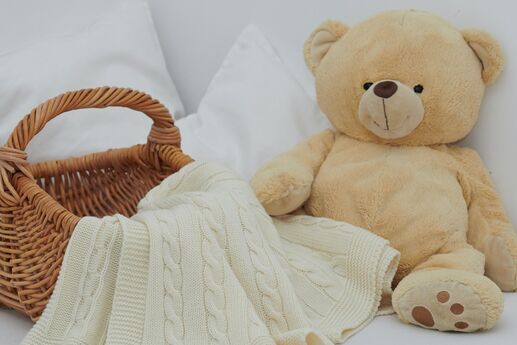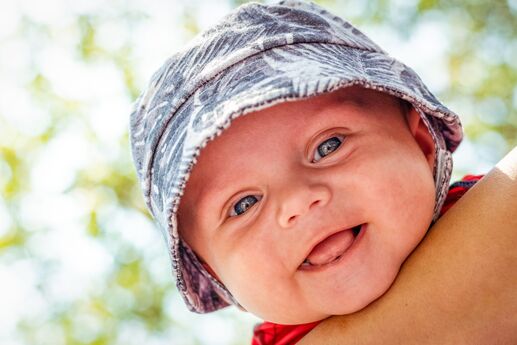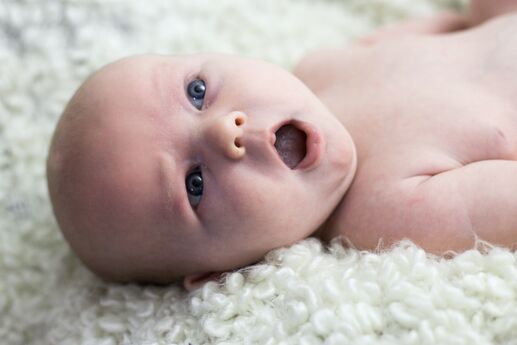Baby Milestones: First Words
The first word to come out of my 10-month-old son’s mouth was music to my ears: “Mama.” Carter had been babbling and making bubbles and sounds for a while, so I almost missed it when “mama” passed from his lips. After that, I paid careful attention to his mumbles, eager to catch the next new word. And I know I wasn’t alone in my excitement: First words are memorable baby milestones for any parent. Here’s what you should know about your little one’s chatter.
First words are (often) predictable. Most new babies start to pick up language and spew out first words sometime between 8 and 12 months. Carter wasn’t alone in his first word of choice: Studies show that “mama” and “dada” are tops on infant’s vocabulary lists (probably because both mom and dad repeatedly encourage their new babies to say these words!). Also, infants typically gravitate toward words with repetitive sounds, which is why their early vocabulary often includes words like bye-bye, nana (for banana), and uh-oh.
They have a preference. After “mama,” some of Carter’s other first words included animal names and his favorite objects, something that I learned is common for new babies. In fact, the first words most frequently uttered by babies after dada and mama include baabaa (bottle), dog, kitty, ball, and duck.
They start talking quickly. It takes almost the first year of life for a baby’s language skills to become apparent. But once your baby starts talking, watch out! Most toddlers have a vocabulary of at least 50 words by age two. That’s when Carter started to use simple phrases like “more milk” and asked questions like “Go bye-bye?”
You can help boost vocab. Even when Carter wasn’t saying a whole lot, his brain was recognizing and storing words every time I talked to him. To help boost his vocabulary, I used descriptive words whenever possible. For example, when snuggling with him on the couch, I would say “Your blue blanket is so soft and fuzzy.” I also read and sung to him as often as possible to expose him to a broad vocabulary.
My diligence paid off, and Carter grew into a chatty little kid. Your new baby will also be rattling off questions and commentary before you know it, but if you feel like her talking is delayed, speak to your pediatrician. Together, you can help her reach this fun baby milestone!







